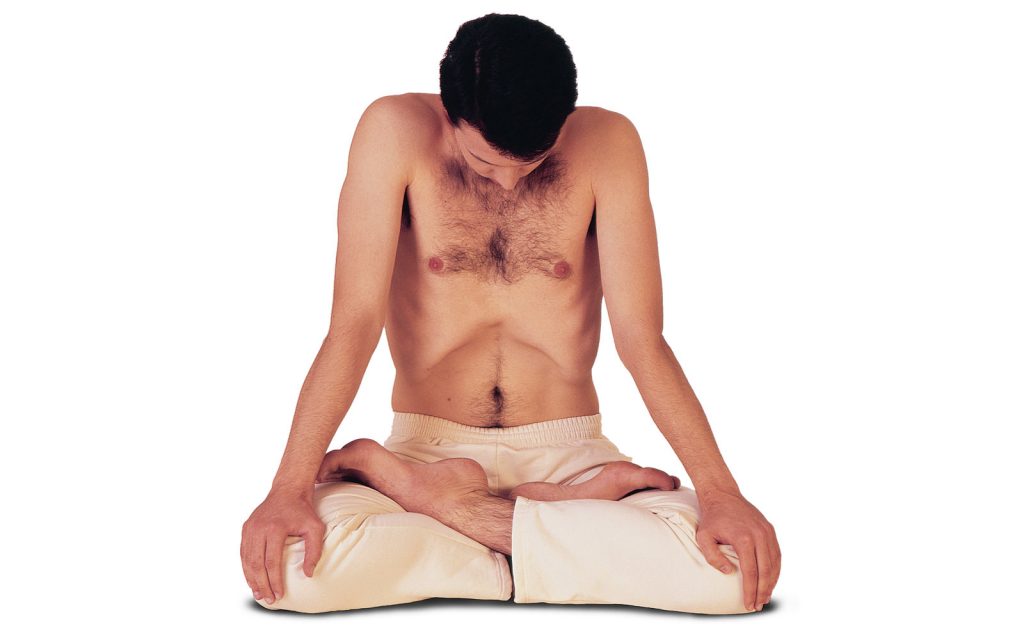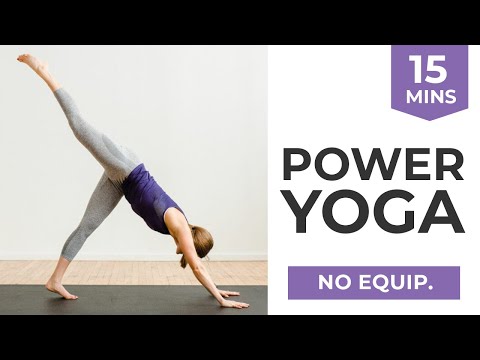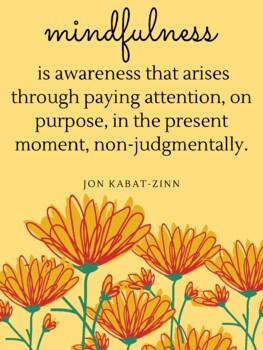
Yoga philosophy's core principles are meditation, asana, and joy. These practices are intended for the improvement of one's physical condition. The asanas are considered "mastery" if they can be held for an extended period. There are four types: Primary, Intermediate, Advanced. Each asana requires mental concentration to be efficient. The primary goal is to stabilize the breath and detach from any unnecessary distractions.
Yoga has several stages. The five initial stages of yoga use external aids. The mental aids are used in the last three stages. Dharana means the ability to remain conscious of the externals over a long period of time. Dhyana is the unabated contemplation and concentration on the object of meditation, without the need to think about the ego. The ultimate goal in all yoga practices is samadhi. This refers to total self-collectedness. The meditator can achieve this state by connecting to the cosmic intelligence.
Yoga's intellectual contents are based on principles of Samkhya. This is the Hindu school for philosophy. It assumes the existence of a Supreme Being. The aspirant is able to achieve total spiritual freedom. The aspirant should be free of all illusions, ignorance, and material, because they can only bring him down. The aspirant uses dephenomenalization in order to reverse the world's current order and attain purity.

Westerners may struggle to understand the core principles and concepts of yoga philosophy. The core principles of yoga philosophy can be difficult for Westerners to grasp. However, they are useful in reorienting one's mind and helping to feel the interconnectedness among all things. Yoga practice incorporates many aspects of subtle bodies such as the chakras and nadis. Hatha yoga is particularly grounded in the study of energy anatomy, which is an important part of yoga practice.
The philosophy of yoga is essential for practitioners who are serious about practicing yoga. It helps prepare the body and mind for yoga practice. The Yoga Sutras are concerned with ethical preparations and ethical considerations in the first two stages. The yama, niyama and final stages of yoga are the first. The niyama stages focus on discipline and abstinence, while the niyama stages focus on the mind.
The eight limbs of yoga are described in the Yoga Sutra's aphorisms, also known as "Threads of Wisdom". These aphorisms can be used to guide you in living a meaningful life. In addition to the eight limbs of yoga, the Sutra also discusses the different aspects of meditation. It stresses mindfulness and meditation. It encourages people to reach their full potential. Living a yogic lifestyle is a wonderful way to avoid suffering.
Yoga philosophy emphasizes more than just asanas. It also stresses the importance and benefits of moksha. Yoga practice is incomplete without the aphorisms. The yoga practice includes the asanas. The asanas may help practitioners attain moksha. It is important to know the philosophical roots of this practice. Start with the yogic text. Yoga is a serious practice. You need to incorporate the principles and aphorisms in your classes.

Self-realization has been a central concept of yoga philosophy. This can be achieved by practicing the "Yoga-sutras", also known as the "Yoga Sutras". The sutras contain various principles and practices to achieve self-realization. Yoga-sutras contain the principal texts of yoga. The practitioner should focus on the breath during the Asanas.
The ultimate goal for yoga is the continual experience of pure awareness, also known under Samadhi/Moksha. A yoga practitioner can experience this as the realization of their "true selves". You can experience this state by letting go of all your mental constructs. All thoughts and bodies are gone. Everything is now. This state of enlightenment can be achieved by studying yoga philosophy. This is an integral part to the practice.
Yoga asanas can be a vital part of the practice. But there are also other benefits. These practices not only help you relax but also improve your energy and health. These practices also boost the immune system, which plays a vital role in the human body. Before performing asanas you need to be familiar with yoga philosophy and the benefits it offers. The Yoga Sutras and Patanjali Course is offered by EkhartYoga Academy.
FAQ
Egg is good for you?
All the nutrients that the body needs are found in eggs. It is also good for maintaining strong bones, healthy heart and lungs, as well as stable blood pressure.
Eggs are an excellent source protein, vitamins A,B12, D E, K and calcium. They also contain vitamin B12, D-E, K, calcium and phosphorus.
The cholesterol content of egg yolks is high. However, it doesn't contain saturated fat. Eggs are low in saturated fat compared to other foods.
They are also low calories and sodium. You can make them in any way you like. You can fry, poach, scramble, boil, hard-boil, and bake them.
They are extremely nutritious and simple to prepare.
You should eat at least two whole eggs per day. You can add eggs to your diet if you don't like eating eggs.
Our bodies need eggs to provide the essential nutrients they require. Include eggs in your daily diet.
How to get rid of belly fat fast
There are several ways to reduce belly fat fast. One method is to eat less and drink lots of water.
Running and swimming are two other ways to boost your metabolism.
Sitting down too long is not a good idea if you want your belly to shrink quickly. Stand up often throughout the day. This will help reduce calories.
You don't have to give up on trying all of the above methods if you still struggle with your belly fat.
This involves using a device called a belt. When you sit down, the belt tightens around your waist.
You will feel more comfortable and be able to move around. This causes you to burn more calories, and your belly fat will decrease.
What if I exercise and drink alcohol?
Yes. Alcohol has increased energy expenditure, speed up recovery time, and reduced soreness.
The insulin sensitivity of alcohol is also increased, which makes it easier for glucose to be absorbed.
Alcohol can also cause dehydration which can lead to a slower metabolism. You may also experience a reduction in testosterone production which can lead to decreased muscle-building potential.
For these reasons, women shouldn't drink alcoholic beverages before working out. Women who drink heavily should wait at LEAST 24 hours before they start working out.
The best thing for women who are pregnant is to avoid alcohol.
Men should drink only one glass of alcohol per day.
How Metabolic health is key to aging well
Today's people live longer than ever before. But as they do, they're also getting sicker. Even though we have made significant advances in medical science it is becoming clearer that our current approach doesn't work.
We have to change how we see health and aging. Healthy aging is possible only if we look at our metabolic health, not just weight loss, but also overall well-being.
And if you want to live an active life for decades to come, you should ensure that your metabolism stays strong and healthy throughout your entire lifetime.
The good news? There are many things you can do to improve your metabolism. These 7 foods can be incorporated into your diet.
-
Resveratrol in blueberries has been shown to support cell longevity. They also contain antioxidants and vitamins C & E.
-
Beans such as pinto beans and lentils provide excellent fiber and plant protein. These nutrients help maintain blood sugar levels so they don’t spike and fall.
-
Broccoli contains the antioxidant sulforaphane. This has been shown in studies to protect DNA. It may even be able to slow down cancer progression.
-
Chia Seeds are high in omega-3 fatty acids and fiber. They are rich in protein and antioxidants. All these nutrients support heart health, brain function and gut health.
-
Green tea contains catechins, which are polyphenols. Green tea's catechins have been linked with reduced bone fractures as well as cardiovascular disease, cognitive decline, dementia, and increased diabetes risk.
-
Salmonis high in protein and rich in vitamin D is one of the most popular sources of lean proteins.
-
Walnuts are rich in omega-3s as well as antioxidants such alpha lipoic acids (ALA). ALA protects against inflammation and boosts energy production.
What is the best workout order?
It all depends what you want. To build muscle mass, you should first lift heavy weights. Next, you can move onto cardio. You can then go to strength training if your goal is to lose weight.
Cardio can be done if you want to just lose fat. Then add strength training after.
You should do cardio last if your goal is to increase muscle mass. This stimulates growthhormones, which helps build muscle mass.
Eat before you go to the gym. This will fuel your muscles and make them work harder. Plus, it makes you feel better during your workout.
How many calories per day should I consume?
This can vary from person to person. An average person needs 2000-2500 calories per day. It's important to assess your life style, gender, age and height in order to determine how much calories you need.
How often should you exercise per week?
It depends on how much time you have available and what type of exercise you prefer. You should do moderate-intensity aerobic exercise three to five days per week. Don't go overboard. It is crucial to exercise regularly in order to reap the full benefits of your workouts.
Which exercises are most effective for me?
It really depends on the type of fitness goal you have. Some people are more focused on endurance activities such as running, cycling and swimming. Others love lifting weights or using resistance bars. There are many types of exercise programs today. Find the best option for you.
Statistics
- The PRS enabled risk stratification for overall prostate cancer and lethal disease with a four-fold difference between men in the highest and lowest quartiles (HR, 4.32; 95% confidence interval [CI], 3.16-5.89). (pubmed.ncbi.nlm.nih.gov)
- Are You One of the 20% of Guys (mh.co.za)
- According to the American Academy of Dermatology (AAD), men over 50 are at a heightened risk of developing it. (healthline.com)
- According to the American Heart Association, blood pressure should be checked at least once every two years, beginning at age 20. (my.clevelandclinic.org)
- Get free shipping and 25% off today. (healthline.com)
External Links
How To
How can I burn fat while exercising?
Exercise burns calories by increasing metabolism and oxygen consumption.
You'll lose weight safely if you exercise at moderate intensity.
These tips will help you burn fat and keep fit while exercising.
-
Cardio exercises can include running, walking, swimming or cycling.
-
You can exercise for 30 mins three times per week.
-
Add strength training to your workouts if you are looking to lose more weight.
-
Avoid intense workouts. It is possible to build muscle without destroying muscle tissue.
-
When exercising, make sure to drink lots of water. Water flushes out toxins, and keeps your body properly hydrated.
-
Choose low-fat protein shakes after working out. Protein shakes can help boost energy and repair muscles.
-
Smaller meals are better for you.
-
Don't skip breakfast! Skipping breakfast can lead to fatigue and sluggishness.
-
Take care of your mind. Stressful situations may slow down your metabolism.
-
Keep a positive attitude. Studies show that overweight people are more likely to be obese than those who perceive themselves as attractive.
-
Get enough sleep. It is harder to lose fat if you don't get enough sleep.
-
Stay active. Move around at least once an hour.
-
Maintain a healthy diet. Eat right to feel satisfied and full for longer.
-
Find relaxation methods. Your body won't release stress hormones that cause muscle tissue destruction if you have a tense mind.
A balanced diet contains all necessary nutrients for growth and development.
Instead of eating three large meals a day, eat six smaller meals every day. This gives your body the time it needs to process what you've eat.
Calcium is required to support strong bones. Calcium can be found as a dairy product such as milk, yogurt and fortified soy drinks, orange juices, cereals, breads, and cereals.
Calcium is found in leafy green vegetables and beans, tofu as well as nuts, seeds, cheese, and seeds.
Vitamin D is necessary for the body to absorb calcium. Vitamin D is found in certain fortified foods, such as egg yolk and fatty fish.
Vitamin E plays an important role in skin health. It can be found as a vegetable oil, wheat germ, peanuts or almonds.
Your body needs zinc to maintain normal immune function and heal wounds. Zinc can be found in seafood, legumes and meats.
Zinc deficiency may cause fatigue, loss appetite, depression, and impaired immunity.
Eating too much sugar causes insulin resistance, which increases blood glucose levels. Insulin resistance causes weight gain.
Insulin resistance develops when there are high levels of free radicals in the bloodstream. Free radicals are molecules containing unpaired electrons which cause damage to cells membranes.
Most free radicals come from pesticides herbicides, food additives, preservatives smoking, radiation, chemical in cosmetics, lotions and household cleaning supplies.
Free radicals can lead to cancer and heart disease, diabetes mellitus, arthritis, asthma, and premature aging.
Eating a well-balanced diet with antioxidants is the best way to prevent free radical damage. Antioxidants protect against oxidative damage.
Antioxidant vitamins include Vitamin C (found in citrus fruits), beta carotene (found in carrots, sweet potatoes, spinach, broccoli, cantaloupe, apricots, squash, mangoes, peaches, peppers, tomatoes, cabbage, cauliflower, kale, Brussels sprouts, collard greens, watermelon, and strawberries), and Vitamin E (found in nuts, olive oil, avocados, and eggs).
Additional antioxidant nutrients include selenium and copper, manganese and zinc.
Selenium is known to protect cells from the oxidative damage that free radicals can cause. Selenium is found in Brazil nuts, tuna, liver, kidney, shrimp, cod, turkey, beef, lamb, pork, and chicken.
Copper protects the brain and eyes as well as the lungs and red blood cells. Copper is also found in poultry, meat, and organs.
Manganese plays an important role in bone structure. Manganese is found as a component of bone structure in brown rice (spinach, bananas), prunes, raisins and oatmeal.
Zinc is required for normal growth, reproduction and wound healing. Zn can also be found in white fish, lean cuts of meat, poultry, and eggs.